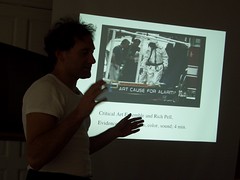Wish I were in Cambridge today! At 1pm, Nick Hopwood will speak about “Anatomist holds model embryo: A marble portrait from 1900” at the Natural History Cabinet’s bag lunch:
Embryo images have in the last few decades acquired extraordinary and controversial prominence in biomedicine and the wider culture. Yet an art work from a century ago can still surprise. In 1900 the Leipzig sculptor Carl Seffner made a marble bust of the anatomist Wilhelm His, the founder of modern human embryology, holding a model embryo in his right hand. Rather than straightforwardly signalling the subject’s achievements, the unusual accoutrement doubtless puzzled many viewers more than did the professor himself. The talk will discuss the design of this double portrait and reconstruct its display in art exhibitions and other settings. This should suggest some relations between embryology and portraiture and shed light on how the identities of embryologists and embryos have changed.
A wonderful item for any medical museum!


